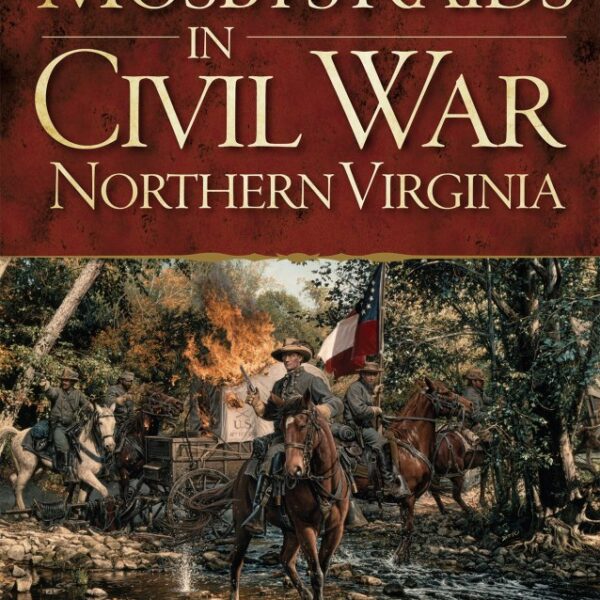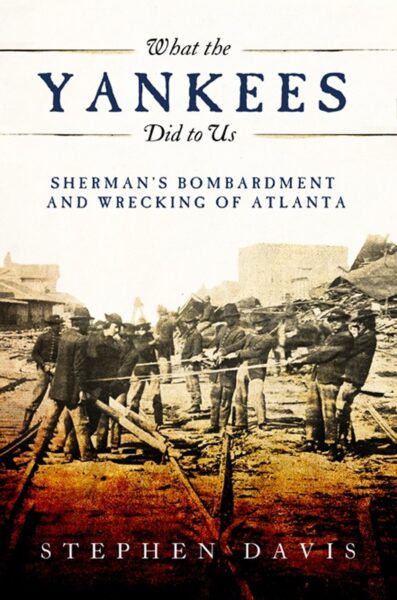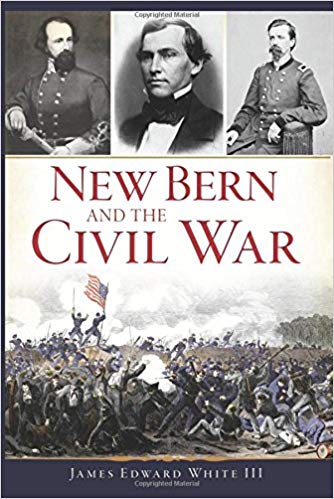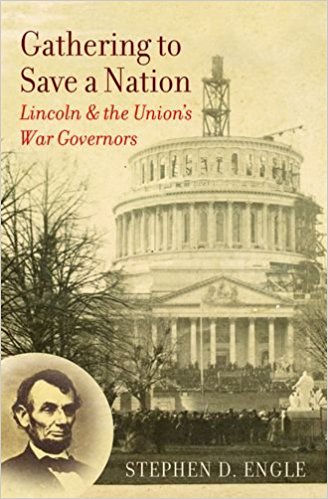Lens of War: Exploring Iconic Photographs of the Civil War edited by J. Matthew Gallman and Gary W. Gallagher. University of Georgia Press, 2015. Cloth, IBSN: 978-0820348100. $32.95.
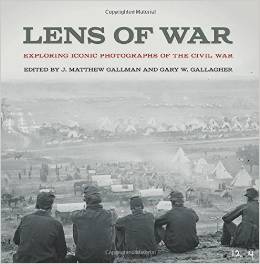 In terms of both concept and content, Lens of War is unlike any other title in Civil War scholarship. Editors J. Matthew Gallman and Gary Gallagher began with a simple equation: one photograph + one historian = one essay. They asked several scholars to choose a photograph from the conflict. Whether the image is iconic or obscure, a personal favorite or a scholarly inspiration, a particularly useful classroom visual, or one that most encapsulates an interpretation of the war, authors were then tasked with writing a relatively brief essay about it. (By brief, I mean to say that most are only a few double-columned pages and easily consumed within 15-20 minutes.) The only rule concerning the composition of essays seems to have been that there really weren’t any rules; each essayist received a generous berth to describe, interpret, moralize, reminisce, or rethink in his or her own unique way. Thus, while the style and approach of each essay varies greatly, the spontaneity exhibited from historian to historian is part of what makes the book such a pleasure to read—and what should help endear it to a non-academic audience.
In terms of both concept and content, Lens of War is unlike any other title in Civil War scholarship. Editors J. Matthew Gallman and Gary Gallagher began with a simple equation: one photograph + one historian = one essay. They asked several scholars to choose a photograph from the conflict. Whether the image is iconic or obscure, a personal favorite or a scholarly inspiration, a particularly useful classroom visual, or one that most encapsulates an interpretation of the war, authors were then tasked with writing a relatively brief essay about it. (By brief, I mean to say that most are only a few double-columned pages and easily consumed within 15-20 minutes.) The only rule concerning the composition of essays seems to have been that there really weren’t any rules; each essayist received a generous berth to describe, interpret, moralize, reminisce, or rethink in his or her own unique way. Thus, while the style and approach of each essay varies greatly, the spontaneity exhibited from historian to historian is part of what makes the book such a pleasure to read—and what should help endear it to a non-academic audience.
The essays are divided into categories based on the subject or content of the photograph in question. Those categories are (in order of appearance): “Leaders,” “Soldiers,” “Civilians,” “Victims,” and “Places.” Whether read in or out of sequence, two characteristics quickly become apparent. First, the quality of writing is uniformly excellent. Readers are treated to the likes of Stephen Cushman, Megan Kate Nelson, Harold Holzer, Stephen Berry, and Elizabeth Varon, to name only a few. Given the collection’s all-star cast (which also includes contributions from its editors, Gallman and Gallagher), this should come as no surprise—but it’s an observation made more impressive nonetheless by the sheer quantity of essays—27 in total—that made it into the book. The second characteristic has not to do with the book’s contents, but with its construction. Unlike the vast majority of historical titles, the pages of Lens of War are high-end: that is, they are printed on the sort of material one would expect to find between the covers of a coffee table book or a Sotheby’s catalog, but perhaps not an edited volume published by an academic press.
Selecting “standout essays” from among the whole in a book composed entirely of standout essays didn’t strike me as an appropriate (or fair) strategy for review. Instead, I’ve opted to adapt the editor’s original invitation and selected two essays to feature based on my own, personal interest in the photographs they analyze. Readers will recognize one the photographs instantly, while the other is admittedly more obscure.
Harold Holzer’s essay, “The ‘Gettysburg’ Lincoln,” which also happens to lead off the collection, investigates a well-known portrait of Abraham Lincoln produced by Alexander Gardner in November 1863. Many readers will be familiar with the portrait, but virtually none will realize how much rarer it was in the 1860s than today, or why it was created in the first place. Holzer’s historical sleuthing makes quick work of both mysteries and, in the process, illustrates the extent to which Lincoln—frequently perceived as modest and even folksy—actually understood the political potential of photography. For instance, in 1861, newly-elected Lincoln essentially snuck into his own capital city to avoid angry mobs in Maryland. The unceremonious start of his administration provided cartoonists with a heap of ammunition to lob at the new commander in chief. But if taken in the right light—both literally and figuratively—a portrait could help Lincoln re-take control of his public image and restore his dignity.
Also of particular interest is the story of a “little experiment” concerning the 1863 Gardner portrait first conducted for Holzer in 1969 by fellow Lincoln scholar Stefan Lorant. Lorant took a sheet of paper and covered half of the bearded president’s face. Together they observed the half still exposed. Lorant then repeated the process on the other side. “The startling result,” Holzer concluded, was “two entirely different men” (9). Readers who take the time to reproduce this simple procedure will not be disappointed; the enigma of Lincoln—a man apparently capable of smiling and frowning all at once—will be on full display.
In his essay, “Cary Robinson’s Last Christmas,” Emory Thomas deals with the portrait of Cary Robinson, a baby-faced private in Confederate General Robert E. Lee’s Army of Northern Virginia. In December 1863, a pair of young, well-to-do girls living in Richmond wrote to Lee. In exchange for granting Robinson leave from the army for Christmas, the girls promised the general “thanks and love and kisses.” Perhaps even more interesting than the request is that Lee took the time to respond—and awarded Robinson a very merry Christmas indeed. In fact, it turned out to be his last Christmas, as Thomas’s title foreshadows. Robinson died in October 1864 at the Boydton Plank Road, cut down by enemy fire.
On one hand, readers are presented with a little-seen side of the conflict’s most famous commander—one that humanizes Lee by exposing his “capacity to laugh at life,” even in the midst of waging what would become (and remain) the bloodiest war in American history. On the other, Thomas wields the picture and its backstory to contend, rather convincingly, that Cary Robinson, a relatively unknown soldier, killed so young in a fight that really wasn’t his to win or lose, ultimately “represents the waste of wars” (82).
These essays do not simply narrate the stories of Lincoln and Robinson; they chronicle how and why the photographs came into being, and what each image reveals to us about the war’s legacy, both now and in the moment it was developed. In these regards, Holzer and Thomas stand strong as representatives of their fellow essayists, which run the topical gamut—from Caroline Janney discussing the effects of military life on individual families, to Judith Giesberg linking the legacy of Civil War POWs to the treatment of American military prisoners in the twenty-first century and James I. “Bud” Robertson (a self-avowed animal lover himself) reminding us that man’s four-legged friends were too often “caught in the crossfire of human destruction” (197).
The UnCivil Wars series at the University of Georgia Press describes itself as “dedicated to new ways of seeing and telling the American Civil War.” Lens of War actually manages to tell the war by seeing it. Moreover, it illuminates not only how photographs shape our understandings and memories of the war, but also how we teach it, and how images—even in black and white—will always hold a special power the written world alone simply cannot supply.
With all of this in mind, the book is highly recommended to historians of photography and visual culture (it even includes a very helpful resource on Civil War photographic histories), but for historians of the Civil War it is—without question—a must read.
Matthew C. Hulbert is the co-editor of The Civil War Guerrilla: Unfolding the Black Flag in History, Memory, and Myth (2015). His articles on Civil War memory and irregular warfare have appeared in Civil War History, The Journal of the Civil War Era, Journal of the West, Common-Place, and The New York Times.
